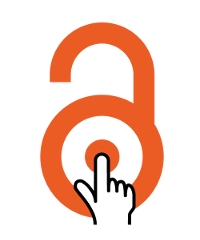
Open Access (OA) means making research publications freely available so anyone can benefit from reading and using the research.
OA makes research available to many more people than a subscription-only journal article does and there is evidence that this can lead to an increase in citations. OA also encourages public engagement with research, which is often paid for out of public money. It is also part of a wider ‘open’ movement to encourage the free exchange of knowledge and resources to widen access and encourage creativity.
There are several routes into Open Access but the most common are Gold & Green, both of which are supported by the University.
Another definition for OA by the Budapest Open Access Initiative is content whose "free availability on the public internet, permit[s] any users to read, download, copy, distribute, print, search, or link to the full texts of these articles..." The Budapest definition also includes the ability to data-mine and remix works; other organizations have a narrower definition, focusing only on freely available access to read/view. The PLoS How Open Is It Open Access Spectrum guide illustrates the full spectrum of open access options.
Taken from: https://libguides.qub.ac.uk/openaccess/introduction
A publication is considered in Open Access if:
There are several different levels of open access. These are largely dictated by publisher policies and how published material is accessible. It does not always mean the work is in the public domain. Two types of open access are Gold and Green. Gold and green OA are the two most common models used to publish research work.
1. Gold - OA refers to publications that are immediately 100% free and accessible to all. Some Gold OA journals require the authors to pay
a fee to support this model read more under this guide's section on paying for open access.
2. Green - OA refers to publications that are available as pre-prints or final peer-reviewed manuscripts, hosted in an institutional or subject repository, but the copyright of the final published manuscript may belong to the publisher. This model usually does not require authors to pay a fee; authors need to discuss this option with their journal.
UWIlinC brings together UWI information resources from across the English-speaking Caribbean in all formats including UWI's intellectual output, subscribed resources (electronic journals, databases, electronic books), and the catalogues for all four UWI campuses.
Paperity is the first multi-disciplinary aggregator of Open Access journals and papers, "gold" and "hybrid".
It must be noted that it gives readers easy and unconstrained access to thousands of journals from hundreds of disciplines, in one central location. It also helps authors reach their target audience, disseminate discoveries more effectively, and maximize research. It also impacts and raises the exposure of journals, boosts their readership, and encourages new manuscript submissions.

The Open Access Button is a browser bookmarklet that registers when people hit a paywall to an academic article and cannot access it. More »